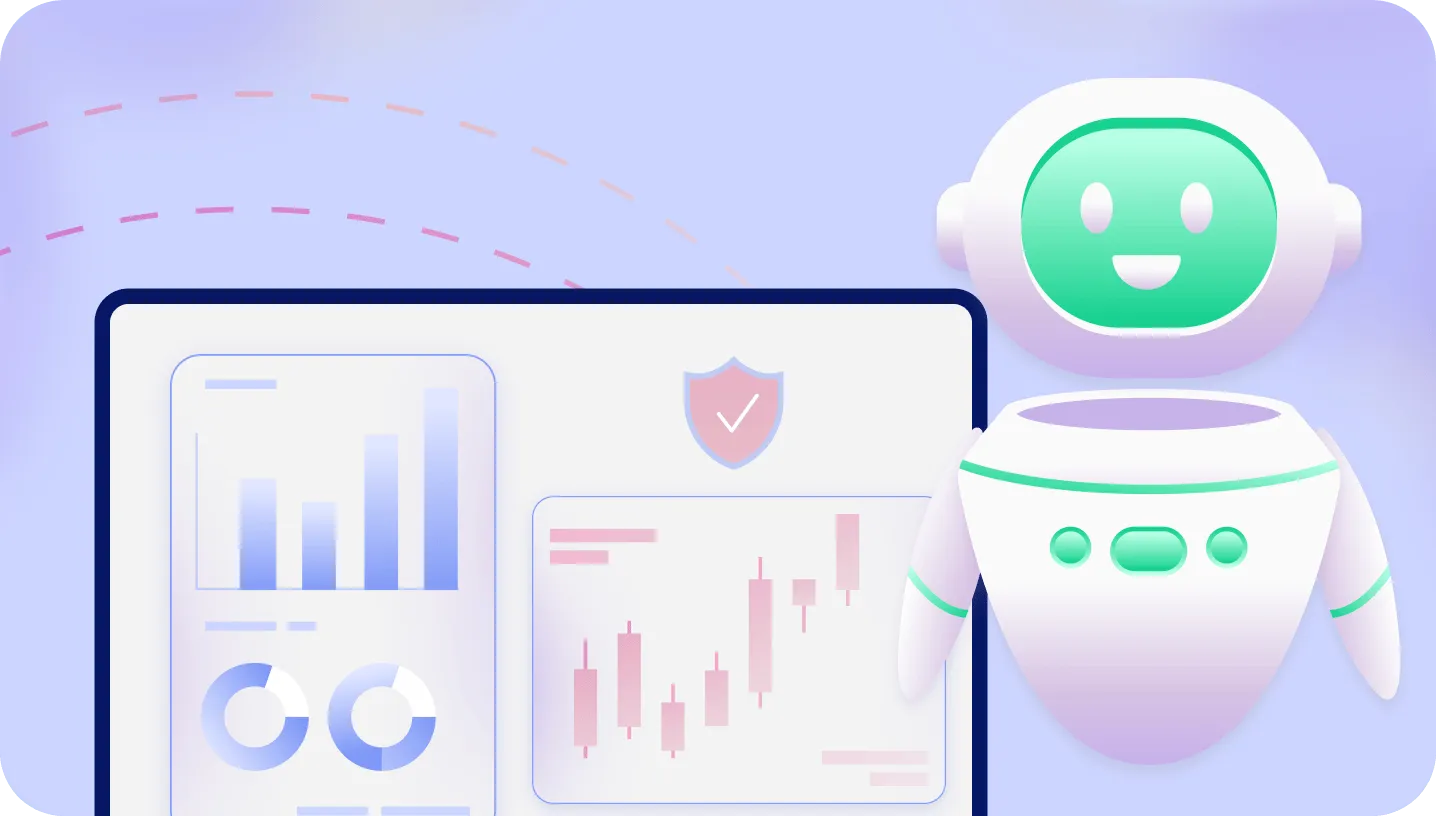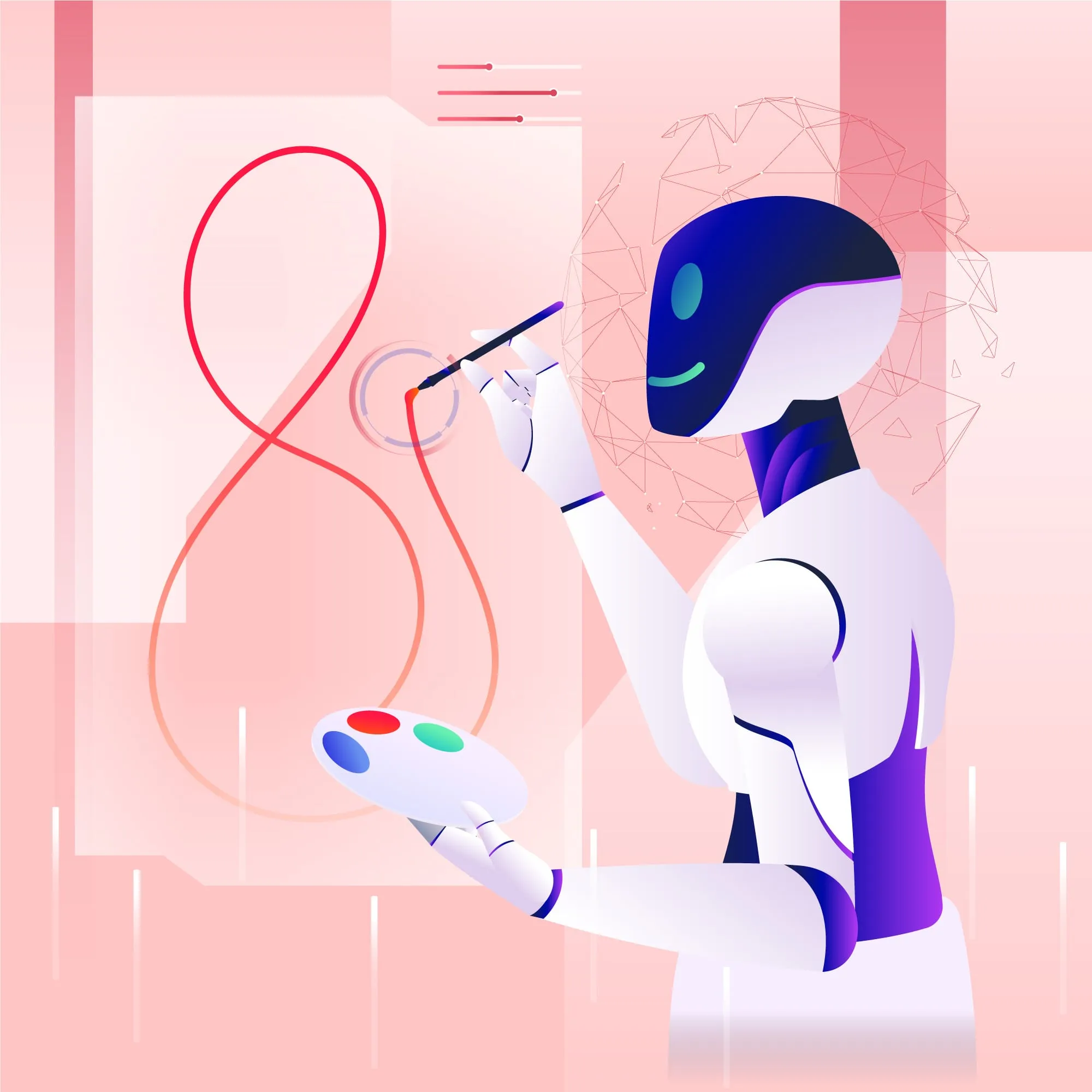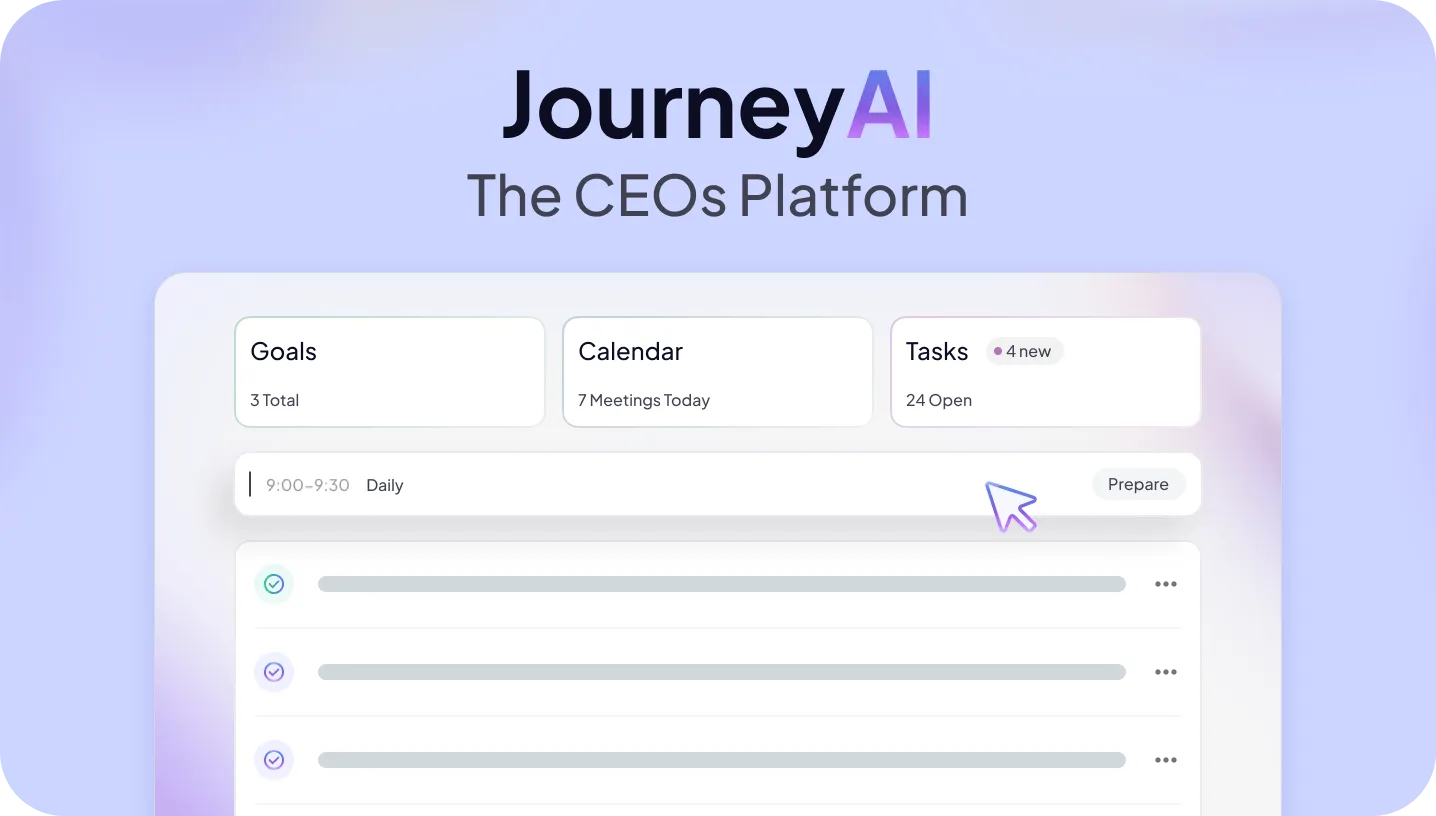Generative vs Agentic AI: What's the Difference?

Artificial intelligence (AI) is driving innovation across industries, transforming how businesses operate.
In fact, AI and machine learning automation have managed to boost operational efficiency by an average of 40% across various sectors!
Within this AI revolution, two terms are gaining a lot of attention: generative AI and agentic AI. While they may sound suspiciously similar, their roles and value are quite different.
So, what sets generative AI apart from agentic AI? And more importantly, how can your business leverage these technologies to stay ahead in a competitive landscape?
In this guide, we’ll break down how each type of AI works, where they shine, and why the generative vs agentic AI conversation is key to making smarter decisions about the tech you use every day.
What Is AI?
Artificial Intelligence (AI) as a general concept refers to machines that can simulate human intelligence, like learning, reasoning, solving problems, and even making decisions.
Instead of just following fixed instructions (like traditional software), AI can analyze data, adapt to new information, and get better over time.
Think of it like this:
- Traditional software = "If X, then Y"
- AI = "I’ll figure out Y based on the patterns I see in X"
How AI Works
At its core, AI runs on algorithms aka rules that help it process information.
With enough data, AI systems can “learn” from patterns and improve their responses over time. This is what we call machine learning.
And when language is involved (like answering questions or generating text) that’s usually powered by natural language processing (NLP) and large language models (LLMs).
What Is an AI Agent?
An AI agent is a type of artificial intelligence designed to take action. It can plan, decide, and even execute tasks to achieve specific goals, all without constant human input.

This makes it perfect for small to medium-sized businesses who need to streamline operations, reduce manual work, and move faster without adding headcount.
How AI Agents Work
Unlike most AI, which relies on prompts, AI agents go beyond reactive behavior. You tell them what you want to achieve, and they got to work.
Once they understand the goal, they plan the steps, make decisions along the way, and execute tasks to reach the outcome, often without needing more input from you.
So how do they do all that? Through a powerful tech stack, of course:
- Large Language Models (LLMs) handle communication, allowing the agent to interpret goals and respond naturally.
- Machine Learning (ML) helps the agent learn from data and improve decisions over time.
- Natural Language Processing (NLP) enables the agent to understand human instructions and context.
- Automation frameworks let it interact with systems and complete tasks, like sending emails, updating CRMs, or booking meetings.
Put together, this creates a software that feels less like a static app and more like your own digital operator. Agents move through workflows, adapt to real-time input, and don’t need any coffee breaks.
Key Characteristics of Agentic AI
Check out the best AI agent platforms of 2025 in our latest blog post.
Key Features of Agentic AI
- Automated Execution: Completes tasks like sending emails, booking meetings, or updating CRMs without manual input.
- Multi-Tool Integration: Connects with your existing tools (Slack, calendar, CRM, docs) for seamless workflow execution.
- Natural Language Commands: Just say what you need. No coding or complex prompts required.
- Context Awareness: Remembers previous tasks, conversations, and goals to act intelligently.
- Goal-Based Planning: Works toward outcomes like “reduce no-shows” or “increase lead conversions,” not just isolated tasks.
- Autonomous Follow-Ups: Sends reminders, follow-up messages, or nudges automatically, keeping everything moving.
- Real-Time Reporting: Tracks progress and surfaces insights so leadership stays informed without digging through data.
What Is Generative AI?
Generative AI is a type of artificial intelligence focused on creating new content, including texts, images, code, music, and even videos.
Instead of just analyzing data or following rules, it learns from massive datasets and uses those patterns to produce original output.

So, while traditional AI might help you spot a sales trend, generative AI can write the campaign copy, design the ad, and generate a product mockup – all within minutes.
Prime examples: ChatGPT, MidJourney, and DALL-E
How Generative AI Works
You give generative AI a prompt, like “Write a product description for a new smartwatch” or “Make a song about bees.” From there, these powerful technologies help the AI create something new, not just repeat what it’s seen
- Large Language Models (LLMs) predict what should come next, word by word (or pixel by pixel), based on patterns they’ve learned from mountains of data.
- Transformer’s ability to understand sequences makes them excellent at tasks like language generation, translation, and writing code. They don’t just copy, they compose.
- Training on billions of data examples of text, images, code, audio, and video helps AI get smarter. This is how it “learns” the structure and style of real-world content.
- GANs (Generative Adversarial Networks) use two neural networks. One to generate content, the other to critique it. Both work together like an artist and a tough editor, improving results through constant iteration.
Together, these technologies power the creativity behind generative AI, allowing it to produce high-quality, on-brand content in seconds. Often, it's so good it rivals what a human might make (on a really productive day).
Key Characteristics of Generative AI
💡 Note: Generative AI shines in content-heavy use cases but doesn’t execute or manage tasks
Key Features of Generative AI
- Text Generation: Write emails, blogs, reports, or summaries with a single prompt.
- Image & Video Creation: Generate visuals, designs, or even videos from descriptions.
- Code Generation: Suggests or writes code snippets to help developers build faster.
- Content Personalization: Tailors messages for different audiences or customer segments.
- Multimodal Input: Some models can take in text, images, or audio and generate multi-format outputs.
- Idea Generation: Brainstorms product names, taglines, campaign ideas, and more.
- Language Translation: Converts content across languages quickly and contextually.
Generative AI vs Agentic AI: Key Differences
By now, you’ve seen what both can do. But when should you reach for one versus the other?
While they’re built on similar foundations (like LLMs and transformers), generative and agentic AI serve very different roles in your workflow.
Here’s a side-by-side look at how they differ, and how to decide which one to use, when.
When To Use Which?
Use Agentic AI when your goal is execution, not just inspiration.
If you're looking to automate follow-ups, book meetings, update CRMs, or coordinate projects without lifting a finger – this is your tool.
It’s ideal for CEOs, C-Suite executives, operations leads, and busy teams who want less manual work and more results.
Think: scheduling that just happens, follow-ups that never fall through, systems that update themselves, and everything runs smoothly even when you’re off the clock.
Use Generative AI when you need original content, fast.
From blog posts and product descriptions to social captions and campaign visuals, generative AI is your always-on creative partner.
It’s a game-changer for marketers, content teams, educators, and researchers who need to move from idea to output without the bottlenecks.
You get from idea to execution in minutes, not days.
Can You Use Both?
Short answer: Yes, and doing so can supercharge your workflow.
For example, imagine you use generative AI to write a persuasive sales email. Then, you hand it off to agentic AI to send the email, track responses, schedule follow-ups, and update your CRM automatically.
Together, they can cover everything from brainstorming to execution without making you break a sweat.
The key? An agentic AI with broad capabilities that can connect your tools, understand your goals, and manage complex tasks on autopilot.
Real-World Use Cases: Generative vs Agentic AI in Action
Okay, so now we know what each does, how they differ and when to use them. For extra inspo, let’s see some real-world examples of how various industries are putting these AI powerhouses to work:
Executive Productivity
Generative AI:
- Drafts meeting agendas, summaries, and reports
- Prepares presentation slides from notes
- Creates thought leadership posts or internal updates
- Speeds up executive communications and documentation
Agentic AI:
- Schedules meetings based on priorities and availability
- Sends follow-ups and status updates automatically
- Tracks action items and nudges stakeholders
- Keeps the leadership loop tight, with zero manual chasing
Sales and Customer Success
Generative AI:
- Writes outbound emails, sales scripts, and call summaries
- Generates personalized pitches based on ICP
- Creates help docs, onboarding flows, and support FAQs
- Keeps content fresh, relevant, and scalable
Agentic AI:
- Books meetings based on customer intent or triggers
- Sends follow-ups, reminders, and renewals
- Updates CRM with call notes, deals, and pipeline status
- Acts as a self-updating sales assistant that never forgets
Marketing and Content
Generative AI:
- Crafts blog posts, ad copy, product descriptions
- Generates visuals, social posts, and campaign concepts
- Helps ideate messaging, tone, and brand positioning
- Turns briefs into publish-ready assets in minutes
Agentic AI:
- Publishes across channels at set times
- A/B tests content variants and tracks results
- Syncs updates to CMS, CRM, or social scheduling tools
- Coordinates multi-channel campaigns automatically
Operations and Project Management
Generative AI:
- Drafts SOPs, project docs, and templates
- Summarizes project updates or stakeholder feedback
- Creates documentation from meetings or task boards
- Reduces time spent writing things down
Agentic AI:
- Assigns tasks across tools (Notion, Jira, Asana)
- Tracks progress and chases blockers
- Sends nudges, updates, and rollups
- Executes multi-step workflows end-to-end
People, HR, and Internal Comms
Generative AI:
- Writes onboarding materials, job descriptions, and internal FAQs
Summarizes engagement surveys and feedback forms - Prepares review summaries and HR docs
- Saves time on internal documentation
Agentic AI:
- Automates onboarding sequences across tools
- Tracks goal setting and check-ins
- Sends reminders for reviews, surveys, training
- Acts like a behind-the-scenes People Ops assistant
Become Part of the AI Revolution with Journey AI
AI is baked into the foundation of how modern businesses operate, compete, and grow.
But here’s the thing: not all AI is created equal. To stay ahead, you don’t just need any AI. You need the right one in your corner.
That’s where Journey AI comes in. While it’s not a generative AI in the traditional sense (it’s not here to write poems or code on command), it does pick up where generative AI leaves off.

Built for teams with big goals, it seamlessly handles the follow-through, so you can focus on what more important matters. Here’s a quick glimpse of how Journey AI powers your productivity:
Smart AI Partnerships: The Secret to Future Business Wins
Generative AI is amazing for sparking creativity. Need fresh ideas or quick content? It’s your go-to tool. But coming up with ideas is just the beginning. Turning those ideas into results is where agentic AI shines. It’s great at handling follow-through, automating tasks, and making things happen. After all, ideas alone won’t move the needle.
On the bright side, you don’t have to choose one over the other. Generative and agentic AI can work separately or together, depending on what your business needs.
With over 80% of companies using AI in some form to stay ahead, it’s clear that smart automation is becoming the norm, whether it’s for creativity or execution.
The future belongs to teams that let AI take care of the heavy lifting so they can focus on what really matters: growing their business without the stress.
So, why not let AI help you do the same?




